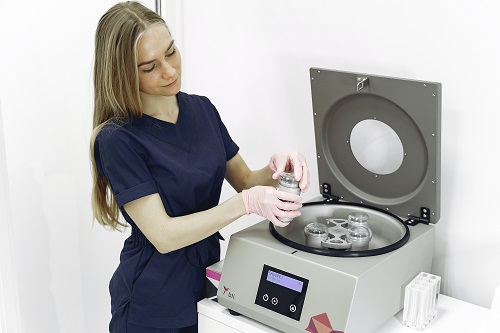Certain professions require certain attire, either for appearance (police, armed forces, or clergy) or for environmental reasons (firefighters, beekeepers, or surgeons). However, many other professional offices are opting for a corporate uniform look. Most people choose slacks or skirts of one color and coordinating shirts with a corporate logo. An important consideration before choosing office uniforms look is if they are comfortable with the idea and the apparel.
When deciding on uniforms for the office, there are a few guidelines that should be followed. This is because uniforms are worn day in and day out and are seen by clients or customers. Here are some guidelines and things to consider when purchasing employee uniforms.
Looks good on everyone

Choose a basic style of clothing that can be worn by people of all builds and sizes. A uniform should look the same for all employees. It should be not a fashionable item that will be out of style in a few months. Allow employees to only make minimal changes to uniforms necessary for fit, but nothing extreme.
Professional

Uniforms should be professional apparel that can be worn both day and night. The uniforms should give an look of professionalism. It should also be able to translate from office work to business meetings, to business dinners. (Note: jackets should be part of the chosen uniform.) This means items like jeans should only be worn for certain occasions, while typically, the uniform is more upscale and standard.
Using Embroidery
By embroidering the company logo onto the uniform, it gives a feeling of community for employees. It also creates business awareness as employees wear the shirts to and from work and display the logo for potential clients. It helps enhance and build your company’s image, showcases your company’s team spirit, and promotes your company’s brand. By choosing to personalize items, such as formal or polo shirts, you can subtly but significantly reinforce your brand image to the customer.
Rule of thumb

In choosing office uniforms, there are a number of considerations. The accepted adage is that you need to be as well dressed as your best-dressed patient. If you want to be casual, it should be “dressed-up casual.” To appear more professional (or older and more experienced clients), a crisp, clean jacket to slip over your clothes may be just what you need when you talk with a new patient, give a report, or have any other serious conversations. If you tend to dress up in the office (or are older or serious in nature), you might want to choose “happier” ties with your dress shirts or printed blouses and leave the jacket off in the office.

Just as you should look as professional as possible, so should your staff. In a medical facility, your nurses and assistants should wear uniforms. If you cater to a pediatrics clientele, there are a number of online retailers/catalogers online. They can help you in choosing uniforms for your office. There are whimsical uniforms with cartoon characters of every nature to appeal to the young set. It will put them more at ease than the traditional stark white nurses’ uniforms. Conversely, if your practice is strictly adult or geriatric, it would probably be wise to stick with a traditional look.
Comfort is King

Certainly, looking good is key to projecting a good company image. But making sure that the uniform fits the job is important, too. Think about the kinds of tasks that workers will be performing in their uniforms. Your medical office staff may look nice in knee-length skirts, but will they be able to bend to reach the bottom set of files without looking immodest? Will the trendy flare-sleeve shirts you’re considering for your wait staff get easily caught on sharp corners in the kitchen area?
Uniforms that fit well and feel good mean that your employees can concentrate on their job more. They don’t have to fuss with pulling down a skirt that’s hiking up or tugging at a collar that is too tight. Let’s face it if your employees are worried about how they look. The less likely they’ll be focused on the job at hand. A good, comfortable uniform can increase worker productivity, and battle the ‘I’m late because I didn’t know what to wear’ excuse.
Picking the Perfect Color

‘Uniform’ doesn’t have to mean ‘boring. These days, the uniforms for your office can be as colorful as a child’s box of crayons. They can also be completely neutral and unassuming. Not sure which color to choose? Check out your business logo and choose one of the accent colors within it to bring out, or choose a completely different color that compliments it.
Working with a plain black and white logo? You can even take a cue for attractive uniform colors by looking around the interior of your office space. This will create a palette that will look nice in your surroundings.
In terms of functionality, darker colors are favored by those wishing to minimize any stains showing (and who hasn’t suffered from the first-thing-in-the-morning-coffee-spill?). Darker colors like navy, charcoal, and black are especially good for those with inherently ‘dirty’ jobs like mechanics and factory workers.
The Right Material for the Job

Unlike the old days of ‘100% polyester everywhere,’ today’s uniform buyer has a wide variety of choices. When purchasing uniforms for your office, you can see a lot of materials on sale. For a climate-controlled office environment, heavy-weight, pre-shrunk cotton tops, and cotton-twill pants are a practical choice; they feel good on the skin and look good on the staff.
In more industrial environments, a car garage, for example, you never know what kind of mess is around the corner (or on the garage floor!) Cotton/poly shirts repel water and wrinkles, but aren’t as breathable as natural fabrics; workers may be more comfortable wearing a cotton undershirt. Also, cotton or cotton-poly coveralls are a good choice to keep workers comfortable while keeping their personal clothes clean.
Hopefully, this comprehensive article has resolved any and all questions and concerns regarding choosing uniforms for your office.

